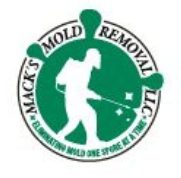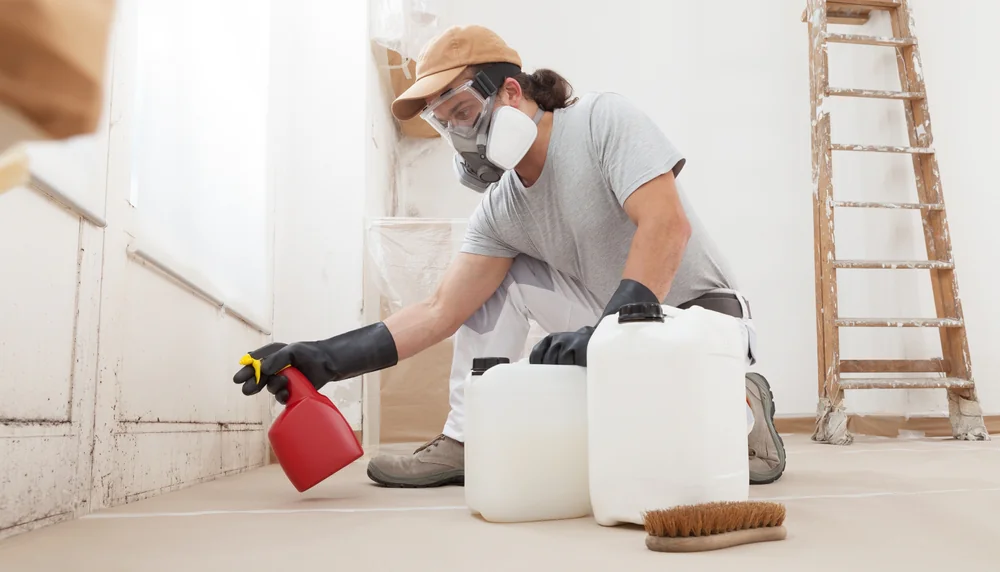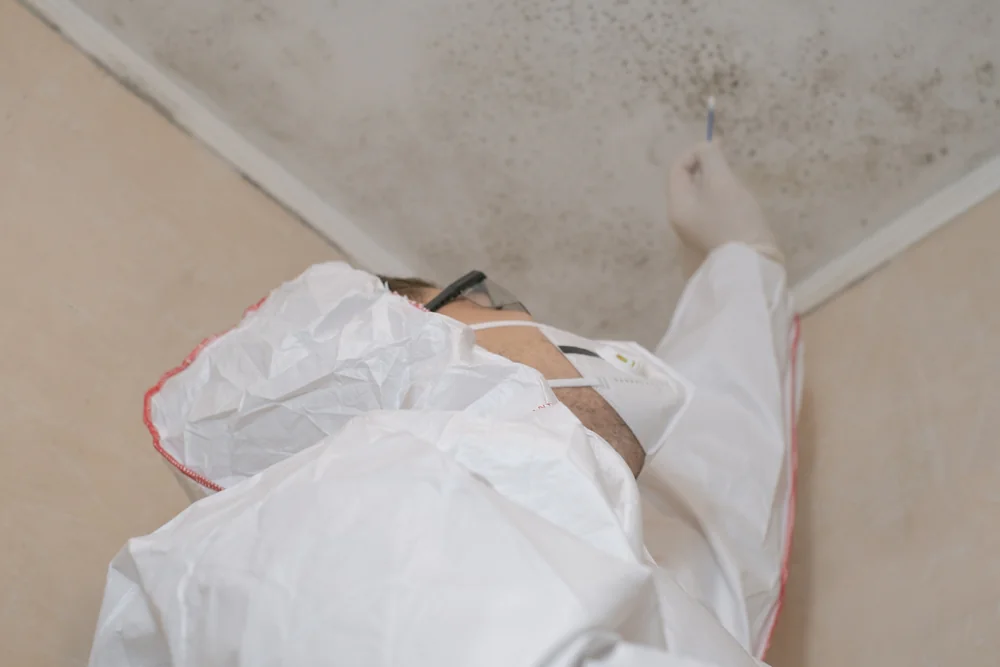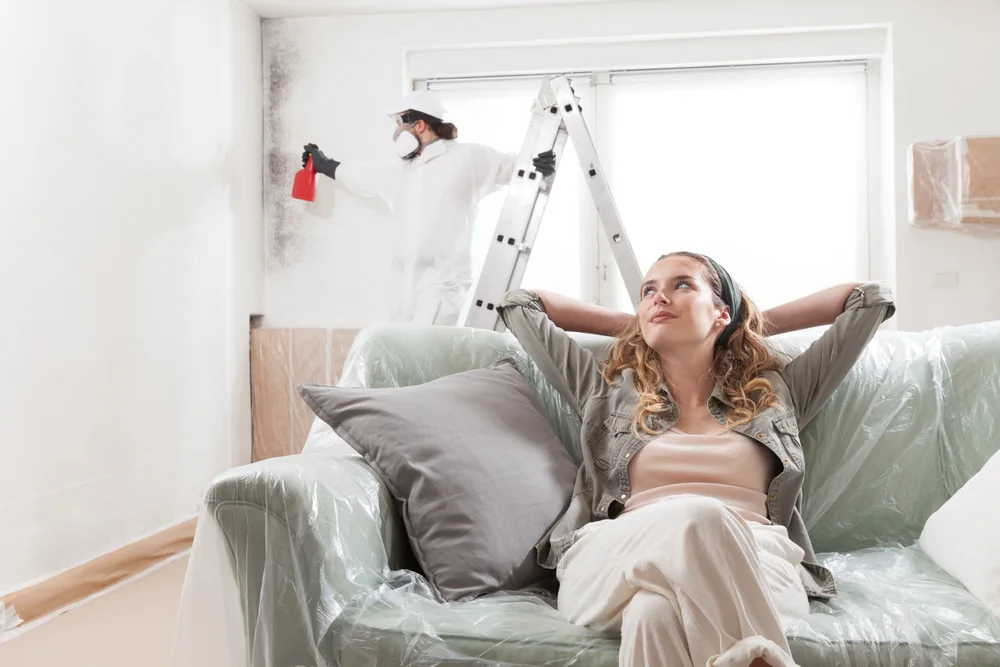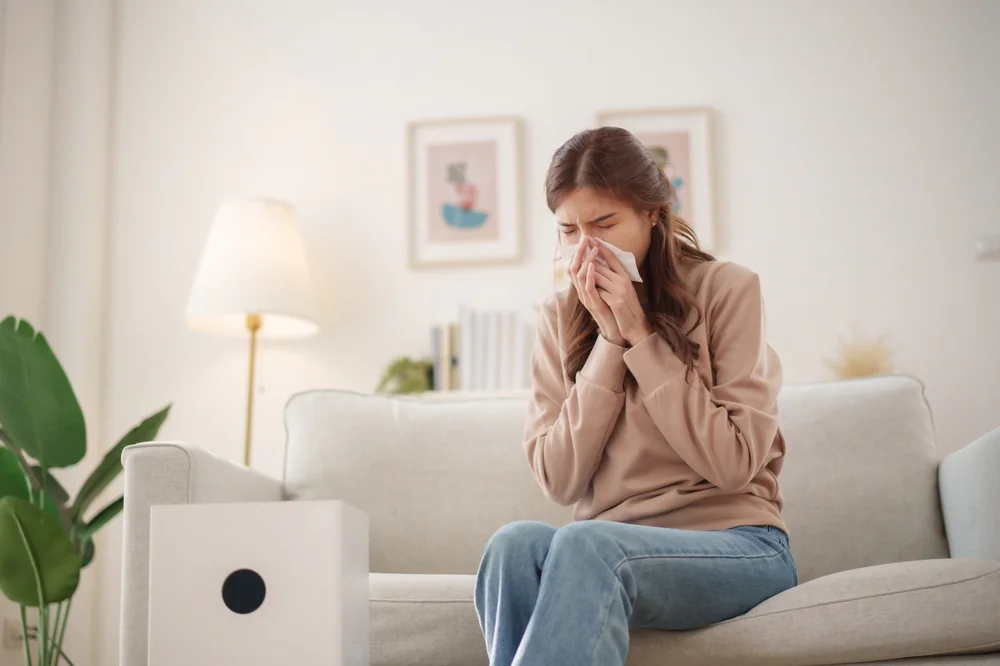Summary:
What Professional Mold Remediation Actually Involves
Professional mold remediation is a comprehensive, multi-step process that addresses not just visible mold, but the entire contamination event. Unlike DIY cleaning that focuses on surface treatment, professional remediation tackles the source, contains the spread, and eliminates both visible growth and microscopic spores throughout your Edison, PA property.
The process begins with thorough assessment and moisture detection using specialized equipment like infrared cameras and moisture meters. We don’t just look for obvious mold—we identify hidden growth behind walls, under flooring, and in HVAC systems where homeowners typically can’t reach.
Most importantly, professional remediation follows strict containment protocols to prevent cross-contamination during the cleanup process. When mold is disturbed, it releases millions of spores into the air. Without proper containment, DIY efforts often spread the problem to previously unaffected areas of your home.
Why DIY Bleach Solutions Fail in Pennsylvania Homes
Bleach can kill surface mold on non-porous materials, but it can’t penetrate porous surfaces like drywall, wood, or insulation where mold roots often extend. More problematically, bleach contains water, which can actually feed mold growth in porous materials, making the problem worse over time.
The bigger issue is what happens when you disturb mold without proper containment. Every time you scrub or spray mold, you’re releasing thousands of microscopic spores into your home’s air. These spores can travel through your HVAC system, settle in new areas, and create secondary contamination sites that weren’t problems before your DIY attempt.
Professional remediation addresses this through negative air pressure systems and HEPA filtration that continuously capture airborne spores during the entire process. Industrial-grade air scrubbers run for 48-72 hours, cycling your home’s air through HEPA filters multiple times to remove microscopic contaminants that no surface cleaning can address.
Pennsylvania’s humid climate makes this airborne contamination particularly problematic. With humidity levels often exceeding 60% during summer months in areas like Flushing, PA and Point Pleasant, PA, any spores that escape during DIY cleaning have ideal conditions to establish new growth sites. Professional moisture control and dehumidification are essential components that DIY approaches simply can’t replicate.
The health implications are significant, especially for families with children. Studies show that children are particularly vulnerable to mold exposure, with increased risks of asthma, allergic reactions, and developmental issues. Professional remediation includes air quality testing before, during, and after treatment to ensure your family’s environment meets safety standards.
The Critical Role of Containment and Air Filtration
Containment is arguably the most crucial aspect of professional mold remediation, yet it’s completely absent from DIY approaches. Professional containment involves creating physical barriers using plastic sheeting and maintaining negative air pressure to ensure contaminated air doesn’t spread to clean areas of your Springfield, PA home.
The containment area functions like a controlled environment where all remediation work occurs. Double layers of polyethylene sheeting create barriers between the moldy area and the rest of your home, while decontamination chambers allow our technicians to enter and exit without tracking contamination. This level of isolation is impossible to achieve with household cleaning methods.
HEPA air filtration systems work continuously during the remediation process, serving two distinct functions. During demolition and removal phases, they operate as negative air machines, pulling contaminated air out of the work area and exhausting it outside. This creates a vacuum effect that prevents spores from escaping containment and contaminating your living spaces.
After visible mold removal is complete, the same equipment switches to air scrubbing mode, continuously recycling air within the contained space through HEPA filters. This process typically runs for 24-72 hours, gradually reducing airborne spore counts to acceptable levels. Each air exchange cycle captures more microscopic particles, eventually achieving indoor air quality that meets or exceeds outdoor baseline levels.
The sophistication of professional air filtration becomes clear when you consider that HEPA filters capture 99.97% of particles 0.3 microns or larger. Mold spores typically range from 1-30 microns, making them easily captured by proper filtration systems. However, these systems require significant airflow capacity and precise pressure management that household equipment simply can’t provide.
Professional containment also protects your belongings and unaffected areas from cross-contamination. Without proper barriers, mold spores can settle on furniture, clothing, and personal items throughout your home, creating ongoing health risks and potentially requiring extensive cleaning or replacement of contaminated belongings.
Want live answers?
Connect with a Mack's Mold Removal expert for fast, friendly support.
The Complete Professional Mold Cleanup Process
Professional mold cleanup follows a systematic approach that ensures thorough contamination removal and prevents recurrence. The process typically spans 3-5 days, depending on the extent of contamination and the size of affected areas in your Pennsylvania home.
The first phase involves comprehensive assessment and moisture mapping to identify all affected areas, including hidden growth behind walls or under flooring. We use thermal imaging cameras, moisture meters, and air sampling equipment to create a complete picture of the contamination event.
Once assessment is complete, our remediation team establishes containment and begins the systematic removal of contaminated materials. This isn’t simply cleaning—it often involves removing and disposing of porous materials like drywall, insulation, and carpeting that can’t be effectively cleaned.
Phase 1: Assessment, Containment, and Material Removal
The initial assessment phase goes far beyond what homeowners can accomplish with visual inspection. We use specialized equipment to identify moisture sources, map contamination patterns, and determine the full scope of affected areas. Thermal imaging reveals temperature variations that indicate moisture problems behind walls, while moisture meters provide precise readings that guide our remediation strategies.
Containment establishment is a meticulous process that involves sealing off affected areas with plastic barriers, creating decontamination chambers, and setting up negative air pressure systems. All HVAC vents, registers, and air conditioning units are sealed to prevent contamination spread through your home’s air system. This creates a controlled environment where remediation can proceed safely.
Material removal follows strict protocols to minimize spore release. Contaminated materials are carefully contained in sealed bags before removal from the work area. HEPA vacuuming precedes all removal activities, capturing surface spores before materials are disturbed. Non-salvageable items like heavily contaminated drywall, insulation, and carpeting are double-bagged in 6-mil polyethylene sheeting for safe disposal.
The removal process often reveals the true extent of mold problems that weren’t visible during initial inspection. We’re trained to identify and address these discoveries, adjusting the remediation plan as needed to ensure complete contamination removal. This adaptive approach ensures that hidden mold doesn’t become a recurring problem after remediation is complete.
Throughout this phase, continuous air monitoring ensures that containment is effective and that airborne spore levels remain controlled. If monitoring indicates containment breach or elevated spore counts, work stops until the issue is resolved. This level of environmental monitoring is impossible to achieve with DIY methods and is particularly important in Pennsylvania’s variable humidity conditions.
Phase 2: Deep Cleaning, Air Purification, and Verification Testing
After contaminated materials are removed, the deep cleaning phase begins with comprehensive HEPA vacuuming of all surfaces within the containment area. This isn’t ordinary vacuuming—our professional HEPA equipment captures microscopic particles that regular vacuum cleaners would simply redistribute into the air. Every surface, including walls, ceilings, floors, and structural elements, receives thorough HEPA treatment.
Following HEPA vacuuming, our technicians perform detailed wet wiping using specialized cleaning solutions. This three-stage process involves different cleaning agents designed to break down mold roots, neutralize mycotoxins, and prevent regrowth. The wet wiping technique keeps cleaning cloths damp to capture spores rather than making them airborne, and cleaning materials are frequently changed to avoid cross-contamination.
Air purification continues throughout the cleaning process and extends 24-72 hours beyond completion. Professional air scrubbers continuously cycle the contained air through HEPA filtration systems, gradually reducing airborne spore concentrations to acceptable levels. This extended air cleaning period is essential because cleaning activities can temporarily increase airborne particle counts.
The verification phase involves comprehensive testing to ensure remediation success. Post-remediation verification includes both visual inspection and air quality testing performed by independent third-party assessors. Air samples are collected and analyzed to confirm that spore levels have returned to normal ranges comparable to outdoor baseline measurements.
Only after verification testing confirms successful remediation is containment removed and normal occupancy restored. This independent verification provides objective confirmation that the remediation was effective and that your home environment is safe for your family. The documentation from this process also provides valuable records for insurance purposes and future property transactions.
If verification testing indicates that remediation was incomplete, the process returns to earlier phases until acceptable results are achieved. This commitment to verified success distinguishes professional remediation from DIY approaches that rely solely on visual assessment and gives families in Brownsburg, PA, Edison, PA, and surrounding areas confidence in their home’s safety.
Protecting Your Pennsylvania Family with Professional Mold Remediation
Professional mold remediation involves sophisticated processes that address contamination at every level—from visible growth to microscopic airborne spores. The combination of proper containment, HEPA filtration, systematic material removal, and independent verification ensures that mold problems are completely resolved rather than temporarily masked.
The health implications of incomplete mold remediation are particularly serious for families with children, who face increased risks of respiratory problems, allergic reactions, and developmental issues from ongoing mold exposure. Professional remediation provides the comprehensive approach necessary to create truly safe indoor environments.
When you’re dealing with mold in your Pennsylvania home, the investment in professional remediation protects both your family’s health and your property value. The systematic approach, specialized equipment, and verification testing that we provide simply can’t be replicated with DIY methods. For thorough, effective mold remediation that ensures your family’s safety, contact Mack’s Mold Removal to discuss your specific situation and get the professional solution your home needs.
